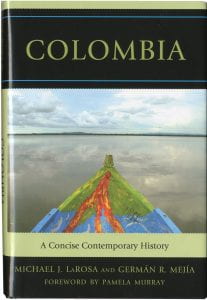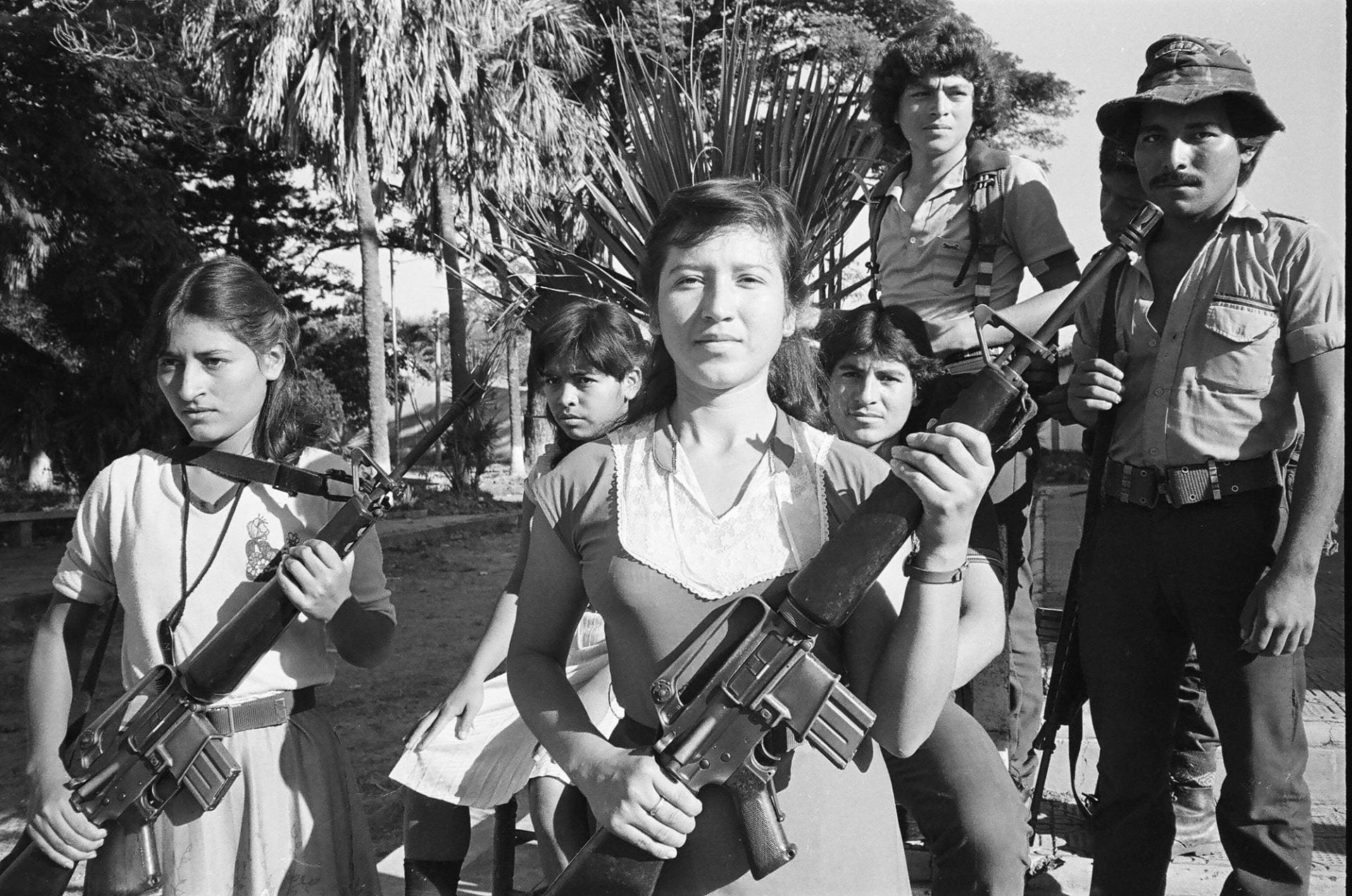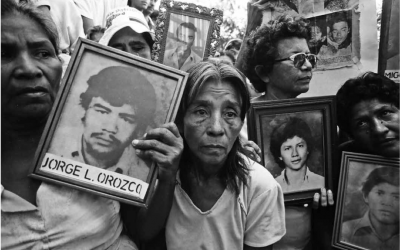A Review of Colombia: A Concise Contemporary History
The Optimist’s Colombia

Colombia: A Concise Contemporary History by Michael J. LaRosa and Germán R. Mejía (Rowman and Littlefield, Maryland, 2012, 265 pages)
In 2008, as a Harvard college sophomore, I was getting ready to go back to Colombia, my birthplace, for the first time since I left with my family as a 13-year-old. I read everything I could find, looking for a better understanding of the country than my vague adolescent memories. I was disappointed to find only opinions at two extremes.
On one hand, the academic literature and international press had only dark and tragic things to say about my fondly remembered homeland. It was a “near-failed state.” It was “war-torn.” It was unstable, bloody, violent and at the very best, it was a “nation in spite of itself,” as the title of David Bushnell’s go-to English language history of the country declared.
On the other, the national press, in an effort to counter negative international perceptions, found a way to mix with their more serious reporting near-propaganda stories that were positive to the point of absurdity. One I read when my family was getting ready to leave the country in 2001, was a cover story by the respected weekly magazine Semana. It promised “1000 reasons to stay in Colombia.” Not surprisingly, the fact that the country was “fourth in nickel production,” reason 106, was not quite enough to derail our plans of emigration.
Michael LaRosa and Germán Mejía’s Colombia: A Concise Contemporary History follows a more recent academic and journalistic trend to see Colombia in a more nuanced light. It is seen as a country that has suffered a catastrophic struggle with armed violence and organized crime, but one that has proved economically and democratically resilient— and is blessed with incredible cultural richness. That is a welcome change.
Without engaging in whitewashing or leaving behind academic rigor and meticulous historical detail, the authors of Colombia have maintained an engaging balance between the more tragic aspects of Colombian history and its successes. They do not rely on the standard comparison-based theories of development; instead, they seek to understand why the country has been able to remain unified on its own terms.
Their narrative is present-focused and organized thematically, rather than following a standard chronology. It explores in small, easily digestible sections subjects like demography, political culture, infrastructure development and, of course, conflict. That structure, which jumps back and forth in time, occasionally confuses the reader, but a detailed timeline at the end is helpful.
The book’s second chapter, “The Colombian Nations,” sets the stage by describing the country’s demographic makeup. Divided by cultural barriers of language, race, religion and geography, Colombia does not fit the common perception of a nation-state as a “unified sociopolitical entity.” The authors discuss the challenges of representation and survival of many ethnic groups like the 87 different indigenous ethnicities, Afro-Colombians or very small communities of gypsy and Middle Eastern ancestry.
However, having painted a picture of cultural fragmentation and inequality, the authors go on to identify the forces that helped such a disparate mix of groups, divided by impossible geography, to develop a common national identity and to maintain a relatively stable territorial entity for two centuries.
“The Cadence of Unity,” the book’s fourth chapter, takes a deeper look at some of those forces. Most unexpected is the argument that the old two-party system—rightfully blamed for a period of unrest so vicious that it is known simply as “La Violencia,” for political exclusion, and for corrosive clientelism—was also an important unifying force in the construction of the nation. Because their representation spread throughout the broken territory, because they integrated Colombians of many classes, and because they served as a gateway between ordinary citizens and the services of the state, the authors argue that the Liberal and Conservative parties were essential in creating a national identity that transcends regional bounds.
But political participation is not all that holds Colombia together. Throughout the book, LaRosa and Mejía highlight other factors that played a role. Some were inherited from the colonial system: Spanish as a national language and the Catholic church, with its unified set of beliefs and extensive territorial presence, as well as its important role in education and healthcare. The establishment of a central military in the early 1800s, elimination of internal barriers to trade, consolidation of a national currency, and the building of infrastructure to connect the country marked an active effort by the central government to facilitate unity.
The book, written in English as a collaboration between two historians from the United States and Colombia, is intended for a foreign audience of non-experts. However, it manages to engage, and even surprise, readers that might be more familiar with Colombia. Those that have spent significant time in the country will recognize in the book’s pages the quirky details of Colombian life that tell as much about the country as the goriest details of its civil war.
As I first skimmed over the table of contents, I was shocked to find a subsection dedicated to beauty pageants. Beauty pageants! In a serious, academic book about Colombian history! As it turns out, the section, no longer than a page, really stuck with me. After finishing the book, I couldn’t help but ask myself: how could anyone write a book that could serve as an introduction to modern Colombia and not talk about that particular national obsession? Or without a mention of Betty la Fea, the traditional chicken stew ajiaco, or the ambivalent feelings of many Colombians toward the celebrated and omnipresent Nobel Prize winner Gabriel García Márquez?
“Violence sells, but it also distorts,” declare the authors in the epilogue of their upcoming paperback edition, while discussing the rise of violence-obsessed pop-culture in the country as seen in the wildly successful narconovelas. That applies, too, to more academic reading. I applaud Mejía and LaRosa for abandoning the seductive lure of gore in Colombian history and making an honest and serious effort to tell a more complete and complex story.
The new edition, scheduled for October 2013 publication, will include a cleverly titled epilogue, “Chronicle of a Peace Forestalled?”, addressing a gap in the first edition by providing an overview of peace talks in the past six decades. The authors walk the reader through myriad negotiation efforts seeking to demobilize various illegal armed actors since the presidency of General Gustavo Rojas in the early 1950s.
The ongoing Havana peace talks between the FARC and the Santos government are scheduled to conclude in November, 2013. The expanded version of Colombia: A Concise Contemporary History will have gone to press by then, so this new chapter will be necessarily inconclusive and outdated when it gets to readers. However, it will provide essential historical context for understanding the final outcome, whatever it may be. By outlining the many previous attempts at reaching a deal to end the conflict, the new chapter reminds us that Colombians have been seeking peace for a long time. LaRosa and Mejía close on an encouraging note:
“Conflicts eventually conclude through dialogue and negotiation. Modern, civilized nations negotiate. No society wages war forever. And Colombia is no exception.” I can only hope that they are right.
Related Articles
A Search for Justice
In 2004, when I left Harvard and last saw you, I thought I would never learn the truth of what exactly happened to Carlos Horacio in the horrendous holocaust of the Palace of Justice in Bogotá. Yet fate was holding a tremendous surprise for my daughters and me, filled with…
Memory: Editor’s Letter
Editor's Letter Memory Irma Flaquer’s image as a 22-year-old Guatemalan reporter stares from the pages of a 1960 Time magazine, her eyes blackened by a government mob that didn’t like her feisty stance. She never gave up, fighting with her pen against the long...
A Search for Justice in El Salvador: One Legacy of Ignacio Martín-Baró
In the small rural town of Arcatao, Chalatenango, Rosa Rivera clung to the hope that one day she would find the remains of her disappeared mother and father and lay them to rest in peace. Others sought to exhume mass graves hoping to recover bodies of nearly 1,000 relatives massacred in the Río Sumpul. …




